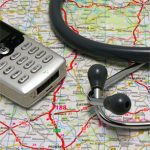Like Los Angeles (LA) County, some areas are experiencing a higher number of COVID-19 cases than other communities across the country. The stay-at-home order in LA County was expanded to mid-May. For rheumatology patients in Beverly Hills, this order extends the time period for telemedicine appointments as the higher numbers of confirmed cases raise fears about increased risk of community transmission. Bryant Uy, MPH, PA-C, a physician assistant at Attune Health in Beverly Hills, Calif., spoke with The Rheumatologist about how the pandemic is affecting him and his practice.
Q: How are you and your staff adapting to the sudden changes brought about by the pandemic?
It’s a very trying time, but the staff has definitely risen to the occasion. We are trying to keep up with all the recommendations from the LADPH [Los Angeles Department of Public Health], CDC and WHO daily. There is a task force within our practice that discusses how to most appropriately apply these recommendations to the practice. The whole staff has been educated on the epidemiology of the COVID-19 virus and is taking social and physical distancing very seriously.
To achieve the proper distancing between employees, we have implemented a rotating schedule using two different teams, and we cut down on non-essential personal on site. The daily staff has now been reduced to a skeleton crew of approximately eight to 10 employees at any given time. This [schedule] has ensured there’s a distance of at least of 6–10 feet between individuals, and all staff are required to wear gowns, goggles, face mask and gloves.
Q: What types of appointments are you conducting, and what are patients’ chief concerns regarding COVID-19’s potential risks and symptoms?
Currently, we have shifted over to a combination of telemedicine visits and traditional office visits. A majority of the visits are now telemedicine, and we have strived to limit the in-person visits for urgent cases only to try to minimize further transmission of the COVID-19 virus.
The transition to telemedicine has not come without its growing pains, but we have found treating the telemedicine visit just like standard in-person visits has been very helpful. Medical assistants continue to check the patient in, enter any pertinent vitals and obtain the chief complaint virtually. After getting these data, our providers take over. We have been very fortunate that everyone—from our provider to all the support staff—are extremely tech savvy, so that has made the transition much easier. We have found doing dry runs with the patient and the support staff the night before has reduced the need for technical troubleshooting throughout the actual office day.



